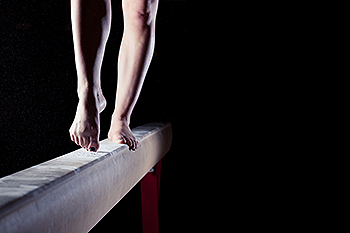Items filtered by date: October 2022
Is Walking Barefoot Outdoors Good for My Child’s Development?

Parents can have differing opinions when it comes to their children walking barefoot. Their reasons can range from the child preventing a foot injury when the shoes are kept on to children possibly having a heightened sense of their environment while walking barefoot outdoors. Recent studies have shown that waking barefoot may benefit the brain and nervous system and this may result from the child being more conscious of their surroundings. An additional benefit can be improved balance due to the feet getting accustomed to walking on various surfaces. Frequently wearing shoes may inhibit the natural toe spread and may gradually lead to sustaining a foot injury. Falling episodes may be reduced when the lower legs and feet are strengthened by walking barefoot. If you have questions about your child’s foot development, please confer with a podiatrist who can confirm if walking barefoot is good for their overall development.
The health of a child’s feet is vital to their overall well-being. If you have any questions regarding foot health, contact Patrick Bruton, DPM of Big Country foot and Ankle. Our doctor can provide the care you need to keep you pain-free and on your feet.
Tips for Keeping Children's Feet Healthy
- Make sure their shoes fit properly
- Look for any signs of in-toeing or out-toeing
- Check to see if they have Clubfoot (condition that affects your child’s foot and ankle, twisting the heel and toes inward) which is one of the most common nonmajor birth defects.
- Lightly cover your baby’s feet (Tight covers may keep your baby from moving their feet freely, and could prevent normal development)
- Allow your toddler to go shoeless (Shoes can be restricting for a young child’s foot)
- Cut toenails straight across to avoid ingrown toenails
- Keep your child’s foot clean and dry
- Cover cuts and scrapes. Wash any scratches with soap and water and cover them with a bandage until they’ve healed.
If you have any questions, please feel free to contact our offices located in Abilene, and Brownwood, TX . We offer the newest diagnostic and treatment technologies for all your foot care needs.
Hammertoe Is a Deformity

The toes provide harmony to the body, and the foot condition that is referred to as hammertoe may cause difficulty in walking and can affect balance. Hammertoe is caused by an imbalance in the foot and can occur from wearing shoes that do have adequate room for the toes to move freely in. It affects the second and third toes, causing them to bend down at the joint, resembling a hammer. It is suggested that medical attention is sought when the first symptoms of hammertoe appear, and the toes may be straightened easily. In severe cases, larger shoes may have to be purchased, in addition to possibly having surgery performed for permanent straightening. Recovery time from this type of surgery may take several weeks, and it is advised that you seek the counsel of a podiatrist in the early stages who can offer correct treatment methods.
Hammertoe
Hammertoes can be a painful condition to live with. For more information, contact Patrick Bruton, DPM from Big Country foot and Ankle. Our doctor will answer any of your foot- and ankle-related questions.
Hammertoe is a foot deformity that affects the joints of the second, third, fourth, or fifth toes of your feet. It is a painful foot condition in which these toes curl and arch up, which can often lead to pain when wearing footwear.
Symptoms
- Pain in the affected toes
- Development of corns or calluses due to friction
- Inflammation
- Redness
- Contracture of the toes
Causes
Genetics – People who are genetically predisposed to hammertoe are often more susceptible
Arthritis – Because arthritis affects the joints in your toes, further deformities stemming from arthritis can occur
Trauma – Direct trauma to the toes could potentially lead to hammertoe
Ill-fitting shoes – Undue pressure on the front of the toes from ill-fitting shoes can potentially lead to the development of hammertoe
Treatment
Orthotics – Custom made inserts can be used to help relieve pressure placed on the toes and therefore relieve some of the pain associated with it
Medications – Oral medications such as anti-inflammatories or NSAIDs could be used to treat the pain and inflammation hammertoes causes. Injections of corticosteroids are also sometimes used
Surgery – In more severe cases where the hammertoes have become more rigid, foot surgery is a potential option
If you have any questions please contact our offices located in Abilene, and Brownwood, TX . We offer the newest diagnostic and treatment technologies for all your foot and ankle needs.
Elderly Toenail Fungus

Aging is a risk factor for many diseases. Seniors take more medications, have weaker immune systems, and are more apt to suffer from pre-existing medical conditions, as well as mobility issues. While elderly nail fungus is not generally severe, it can be uncomfortable, and if left untreated, complications such as permanent nail damage or more serious infections can develop. Nail infections are caused by fungal organisms called fungi. These fungi can feed on keratin, present in the nails, hair, and skin. Such infections can also be caused by yeast and mold spores. The fungi get into the skin and nails from direct contact with infected materials, whether from animals, people, or clothes. Elderly nails are more likely to become brittle and have more cracks, and this makes it easier for the organisms to get inside and spread. Toenail fungus is more common than fingernail fungus. Symptoms typically include thick, discolored, brittle and damaged nails, with jagged edges and possibly a bad odor. Pain may also be present. Toenail fungus may be more prevalent in those with diabetes, recurring skin conditions, and circulation problems as these hinder the body’s ability to fight infection. If you are elderly or taking care of someone who has toenail fungus is a concern, contact a podiatrist who can help you with all foot and ankle-related conditions.
For more information about treatment, contact Patrick Bruton, DPM of Big Country foot and Ankle. Our doctor can provide the care you need to keep you pain-free and on your feet.
Toenail Fungus Treatment
Toenail fungus is a condition that affects many people and can be especially hard to get rid of. Fortunately, there are several methods to go about treating and avoiding it.
Antifungals & Deterrence
Oral antifungal medicine has been shown to be effective in many cases. It is important to consult with a podiatrist to determine the proper regiment for you, or potentially explore other options.
Applying foot powder on the feet and shoes helps keep the feet free of moisture and sweat.
Sandals or open toed shoes – Wearing these will allow air movement and help keep feet dry. They also expose your feet to light, which fungus cannot tolerate. Socks with moisture wicking material also help as well.
If you have any questions please feel free to contact our offices located in Abilene, and Brownwood, TX . We offer the newest diagnostic tools and technology to treat your foot and ankle needs.
Do You Suffer From Painful Feet?
Ankle and Foot Injuries in Gymnastics

Ankle and foot injuries are common problems gymnasts deal with. In gymnastics, there is a high likelihood of lower body injuries in gymnastics because of the high impact forces, repetitive movements, and the preponderance of youth participants who are still growing. These young people are subjected to many hours of training, often year-round, and are generally encouraged to specialize in gymnastics to the exclusion of other sports early on. This causes a higher incidence of burnout, overuse injuries, and negatively impacts their overall athletic potential long-term. Research shows that there are also a lack of strength and conditioning methods in the sport that increase risks of injury. The most common foot and ankle injuries in gymnastics include acute and overuse injuries. Acute injuries are usually caused by an incident and tend to be more severe. These include ankle sprains and bone fractures. Overuse injuries happen when multiple incidents cause an injury to accumulate over time. Such injuries include things like growth plate irritations, tendonitis issues, and stress fractures. These injuries plague gymnasts for their gymnastic careers and beyond. Some of these athletes just tape their ankles and take over-the-counter pain relievers and live with the pain while participating in the sport. If you are or have been a gymnast and suffer from foot and ankle injuries, it is suggested that you consult with a podiatrist who can not only help in the diagnosis and treatment if an injury has been sustained but can provide important injury prevention information as well.
Sports related foot and ankle injuries require proper treatment before players can go back to their regular routines. For more information, contact Patrick Bruton, DPM of Big Country foot and Ankle. Our doctor can provide the care you need to keep you pain-free and on your feet.
Sports Related Foot and Ankle Injuries
Foot and ankle injuries are a common occurrence when it comes to athletes of any sport. While many athletes dismiss the initial aches and pains, the truth is that ignoring potential foot and ankle injuries can lead to serious problems. As athletes continue to place pressure and strain the area further, a mild injury can turn into something as serious as a rupture and may lead to a permanent disability. There are many factors that contribute to sports related foot and ankle injuries, which include failure to warm up properly, not providing support or wearing bad footwear. Common injuries and conditions athletes face, including:
- Plantar Fasciitis
- Plantar Fasciosis
- Achilles Tendinitis
- Achilles Tendon Rupture
- Ankle Sprains
Sports related injuries are commonly treated using the RICE method. This includes rest, applying ice to the injured area, compression and elevating the ankle. More serious sprains and injuries may require surgery, which could include arthroscopic and reconstructive surgery. Rehabilitation and therapy may also be required in order to get any recovering athlete to become fully functional again. Any unusual aches and pains an athlete sustains must be evaluated by a licensed, reputable medical professional.
If you have any questions please feel free to contact our offices located in Abilene, and Brownwood, TX . We offer the newest diagnostic and treatment technologies for all your foot and ankle needs.

